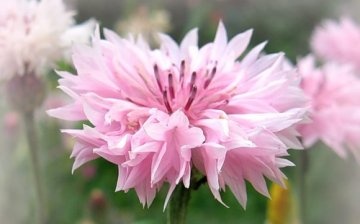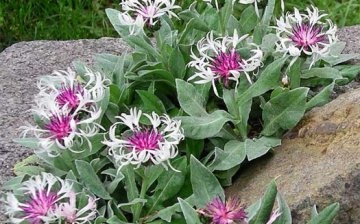Perennial cornflower - beauty in simplicity
At the mention of a cornflower, many of us come up with pictures of childhood or beautiful blue fields, a cornflower is the flower that causes a smile and tenderness. Most often, a cornflower is an annual that easily rises through self-seeding, has not only a blue color, but also red, pink, white and purple.
But there is also a perennial cornflower, it differs from an ordinary cornflower in larger flowers that look amazing in a bouquet and in a garden. Gardeners are especially fond of the large-headed tall cornflower, characterized by large yellow inflorescences. However, such a cornflower is thermophilic and requires sunny places. Cutting flowers from a perennial cornflower, you not only decorate the house, but also lay the foundation for flowering next year.
Perennial cornflower blooms mainly only in summer, but some can bloom again in autumn. So that the cornflower does not lose its blooming beauty, every four years it should be dug up and divided, this is how the rejuvenation of the flower is carried out.
Absolutely any soil is suitable for a cornflower, but well-drained soil, it is better to choose a sunny area, partial shade is allowed. In perennial cornflowers, the height ranges from twenty to eighty centimeters, therefore, depending on the height of the planted flower, the distance between flowers must be observed from fifteen to fifty centimeters. Perennial cornflower reproduces through planting seeds in the spring and dividing the bush in autumn or spring.
Cornflower is an unpretentious plant that does not require careful, special care and grows well and develops itself, but for better flowering, you should loosen the soil, remove weeds, and water in too hot weather. Cornflower practically does not undergo various diseases, the only formidable disease for it is fusarium wilting, a fungal disease that is treated with special drugs that treat both the plant itself and the soil near the flowers.
Feeding the cornflower is not required, but feeding other flowers can also feed the cornflower, the cornflower does not require shelter for the winter. After flowering, it is best to cut to the level of the outlet. A perennial cornflower can bloom for ten years.








